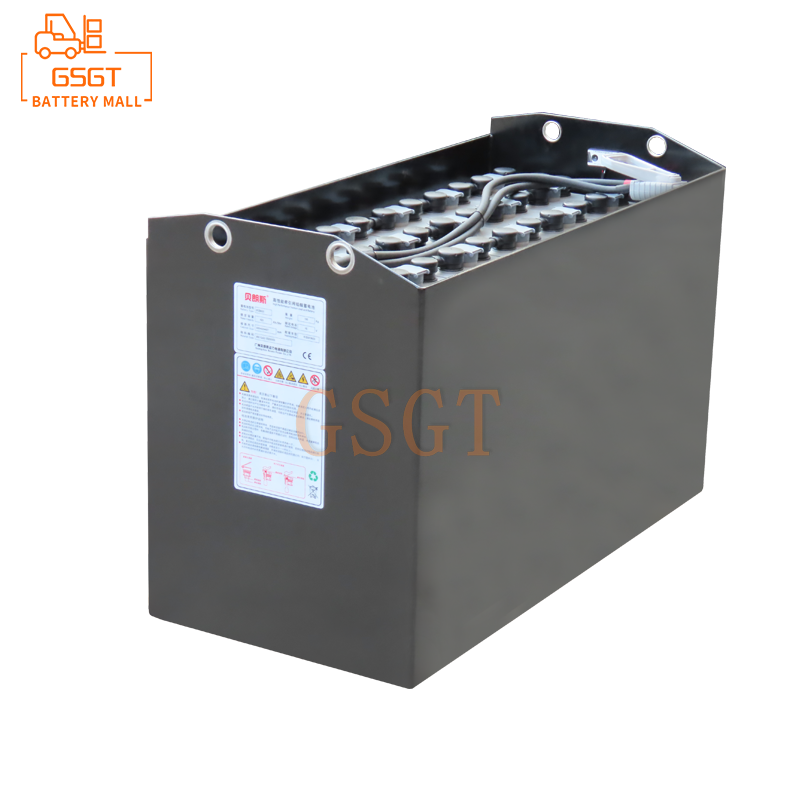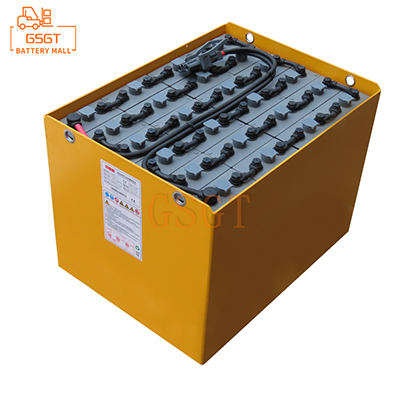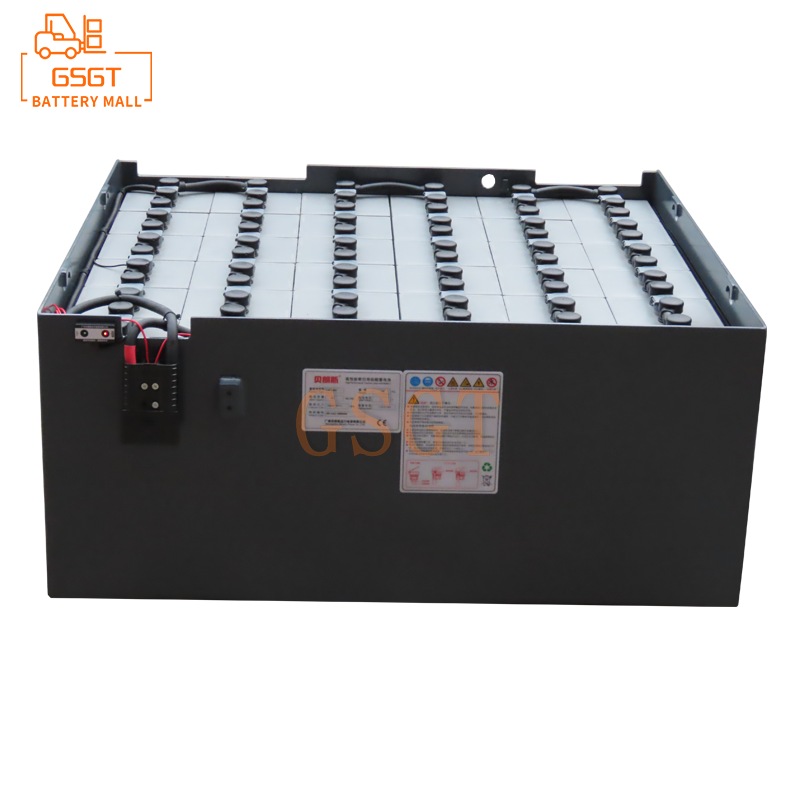Time:2025-05-08 10:57:20
Browse:494
In the modern logistics and warehousing industry, forklifts, as important handling equipment, the performance and lifespan of their power source - lead-acid batteries - directly affect the working efficiency and operating costs of forklifts. Proper daily maintenance of lead-acid batteries can not only ensure the stable operation of forklifts but also effectively extend the service life of the batteries and reduce the operating costs of enterprises. The following is the detailed content about the daily maintenance of lead-acid batteries in forklifts.
Ⅰ. Visual Inspection
1. Shell Inspection
Before using the forklift every day, the casing of the lead-acid battery should be carefully inspected. Check whether there are any cracks, damages or deformations on the shell. Once cracks, even tiny ones, are found in the shell, they may lead to the leakage of the electrolyte. The electrolyte contains sulfuric acid, which is highly corrosive. It not only causes damage to the surrounding environment and equipment but also reduces the amount of electrolyte inside the battery, affecting its performance and service life. If any damage or deformation is found in the shell, the battery should be stopped from use immediately and professional personnel should be contacted for repair or replacement.
2. Pole inspection
Check whether the terminals of the battery are corroded or loose. Terminal post corrosion is usually manifested as the appearance of white or green powder-like substances on the surface, which is caused by the chemical reaction between the electrolyte overflow and the terminal post. Corrosion of the terminal post will increase the contact resistance, resulting in greater energy loss during charging and discharging processes and affecting the power performance of the forklift. If corrosion of the terminal post is found, it can be cleaned with sodium bicarbonate solution. Mix sodium bicarbonate with water in a certain proportion, and gently scrub the terminal post with a brush dipped in the solution. After the corrosion is completely removed, rinse it with clean water and dry it. At the same time, it is necessary to check whether the connection between the terminal post and the connecting wire is firm. Loose connection will cause poor contact and also affect the performance of the battery. For loose terminal connections, appropriate tools should be used to tighten them, but it is important to avoid over-tightening that may cause damage to the terminals.
3. Inspection of exhaust holes
During the charging and discharging process of lead-acid batteries, gases such as hydrogen and oxygen are produced, which need to be discharged through exhaust holes. It is crucial to check whether the exhaust hole is unobstructed. If the exhaust hole is blocked, the gas cannot be discharged, which will cause the internal pressure of the battery to rise and may lead to serious consequences such as expansion of the battery case or even explosion. Regularly use fine iron wire or other suitable tools to clean the exhaust holes to ensure that they are not blocked by debris. At the same time, check whether the cover of the exhaust hole is intact to prevent dust and impurities from entering the battery interior.
Ⅱ. Electrolyte Management
1. Liquid Level Check
The electrolyte inside a lead-acid battery is composed of sulfuric acid and water. During use, the water content will gradually decrease due to electrolysis and evaporation. Therefore, it is necessary to regularly check the electrolyte level. It is generally recommended to check the electrolyte level every 1 to 2 weeks. When conducting the inspection, open the liquid filling hole cover of the battery and observe whether the electrolyte level is within 10 to 15 millimeters above the plates. If the liquid level is too low, the plates will be exposed to the air, causing sulfation of the plates and reducing the capacity and performance of the battery. When the liquid level is found to be too low, distilled water or special lead-acid battery replenishment fluid should be added. Note that under no circumstances should tap water or other water containing impurities be added, as the minerals and impurities in tap water will undergo chemical reactions with the electrolyte, affecting the performance and lifespan of the battery.
2. Density Measurement
The density of the electrolyte is closely related to the discharge degree of the battery. By measuring the density of the electrolyte, the charging and discharging states of the battery can be understood. The density of the electrolyte is measured with a hydrometer. Generally speaking, the density of the electrolyte in a fully charged battery is around 1.28g/cm³. It is recommended to measure the density of the electrolyte once a week in daily use. If a significant decrease in the density of the electrolyte is observed, it indicates that the battery has been discharging a lot and should be charged promptly. At the same time, it should be noted that the density of the electrolyte may need to be adjusted appropriately under different seasons and usage environments. For instance, in cold regions, the density of the electrolyte can be appropriately increased in winter to enhance the low-temperature performance of the battery. In hot regions, the density of the electrolyte can be appropriately reduced in summer to prevent excessive evaporation due to excessively high temperatures.
3. Electrolyte replacement
Although the electrolyte of lead-acid batteries does not need to be replaced frequently under normal circumstances, after a certain period of use, the concentration of sulfuric acid in the electrolyte will change, and impurities may be mixed in, affecting the performance of the battery. When it is found that the color of the electrolyte has significantly darkened or become turbid, or when the performance of the battery still cannot be restored after multiple charges and adjustments to the density of the electrolyte, it is necessary to consider replacing the electrolyte. When replacing the electrolyte, all the old electrolyte in the battery should be drained first, and then the interior of the battery should be rinsed with distilled water to ensure it is clean. Next, add new electrolyte that meets the specifications and charge it in accordance with the prescribed charging method.
Ⅲ. Charging Management
1. Charging Timing
Lead-acid batteries should not be over-discharged. When the power indicator of the forklift shows that the remaining power is around 20% to 30%, charging should be carried out. Excessive discharge will accelerate the sulfation of the battery plates and shorten the service life of the battery. At the same time, the battery should not be left in a completely discharged state for a long time. If the forklift is not used for a long time, the battery should be charged at regular intervals to prevent self-discharge of the battery and resulting in low power.
2. Charging Environment
Choosing an appropriate charging environment is crucial for the maintenance of lead-acid batteries. The charging site should be well-ventilated to avoid charging in a confined space, as hydrogen is produced during the battery charging process. Hydrogen is a flammable and explosive gas, and its accumulation in a confined space can easily cause an explosion accident. The temperature of the charging environment should also be appropriate, generally ranging from 5℃ to 35℃ is more suitable. Excessively high temperatures will accelerate the evaporation of the electrolyte and the aging of the plates, while temperatures that are too low will reduce the charging efficiency and capacity of the battery. In addition, the charging site should be kept away from fire sources and heat sources, and be kept dry to prevent the charging equipment and batteries from getting damp and damaged.
3. Selection and Use of Charging Equipment
Charge with a dedicated charger that matches the specifications of the battery. Lead-acid batteries of different models and capacities have different requirements for parameters such as charging voltage and current. If an incompatible charger is used, it may lead to insufficient charging or overcharging, affecting the performance and lifespan of the battery. Before charging, carefully read the user manual of the charger and connect the charger and the battery according to the correct operation steps. During the charging process, pay attention to observing the status of the charger's indicator lights and parameters such as charging current and voltage to ensure a normal charging process. When the battery is fully charged, charging should be stopped in time to avoid overcharging. Overcharging will cause excessive consumption of the electrolyte, generating a large amount of heat and accelerating the aging and damage of the plates.
Ⅳ. Precautions during Use
1. Avoid high current discharge
During the operation of forklifts, frequent sudden acceleration, sudden braking and long periods of climbing slopes should be avoided, as these operations can cause the battery to discharge a large current instantaneously. High current discharge can cause irreversible damage to the battery plates and shorten the battery's service life. When starting a forklift, the accelerator pedal should be pressed slowly to start smoothly. During driving, try to maintain a constant speed and avoid sudden acceleration or deceleration.
2. Regular deep discharge
During the operation of lead-acid batteries, sulfation may occur on the plates. Regular deep discharge (reducing the battery's charge to a lower level) and full charging can effectively activate the active substances on the plates, reduce sulfation, and extend the battery's service life. It is generally recommended to perform a deep discharge and a full charge every 2 to 3 months. However, it should be noted that the frequency of deep discharge should not be too high, otherwise it will also cause damage to the battery.
3. Prevent vibration and collision
The plates and electrolyte inside lead-acid batteries are prone to displacement or damage when subjected to vibration and impact. During the operation of a forklift, one should try to avoid passing through bumpy sections and obstacles. If it is unavoidable, the speed should be reduced and the vehicle should be passed slowly. At the same time, when handling and loading/unloading the battery, handle it with care. It is strictly forbidden to drop, smash or bump it to prevent damage to the battery casing and internal plates.
V. Regular Maintenance and Professional Inspection
1. Regular comprehensive inspection
In addition to the daily appearance inspection and electrolyte management, a comprehensive inspection of lead-acid batteries should also be carried out regularly. A comprehensive inspection includes checking parameters such as the terminal voltage, internal resistance and capacity of the battery. The charging status and performance of the battery can be understood by measuring the terminal voltage. Measuring the internal resistance can determine the aging degree of the internal plates of the battery and the state of the electrolyte. Measuring capacity can evaluate the actual performance of a battery in use. If any parameter is found to be non-compliant with the standard, it should be analyzed and dealt with in a timely manner. If necessary, professional personnel should be contacted for repair or replacement.
2. Professional inspection and maintenance
For lead-acid batteries with high usage frequency or long service life, it is recommended to conduct professional inspection and maintenance at least once a year. Professional testing institutions can use advanced testing equipment to conduct more comprehensive and accurate tests on batteries, such as through charge and discharge tests, and analysis of active substances on the plates, to gain a deeper understanding of the performance and health status of the batteries. Based on the test results, professionals can take corresponding maintenance measures, such as plate repair and electrolyte adjustment, to extend the service life of the battery.
Proper daily maintenance of forklift lead-acid batteries requires a multi-faceted approach, including visual inspection, electrolyte management, charging management, precautions during use, as well as regular maintenance and professional testing. Only by strictly following the maintenance requirements can lead-acid batteries always maintain good performance, providing reliable power support for the normal operation of forklifts. At the same time, it can also effectively reduce the operating costs of enterprises and improve economic benefits.

$2450

$3405

$4045

$3050

MESSAGE
Professional And Efficient
Security
Affordable Price
Professional Services